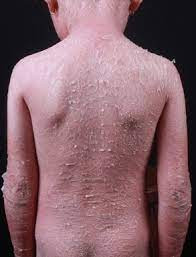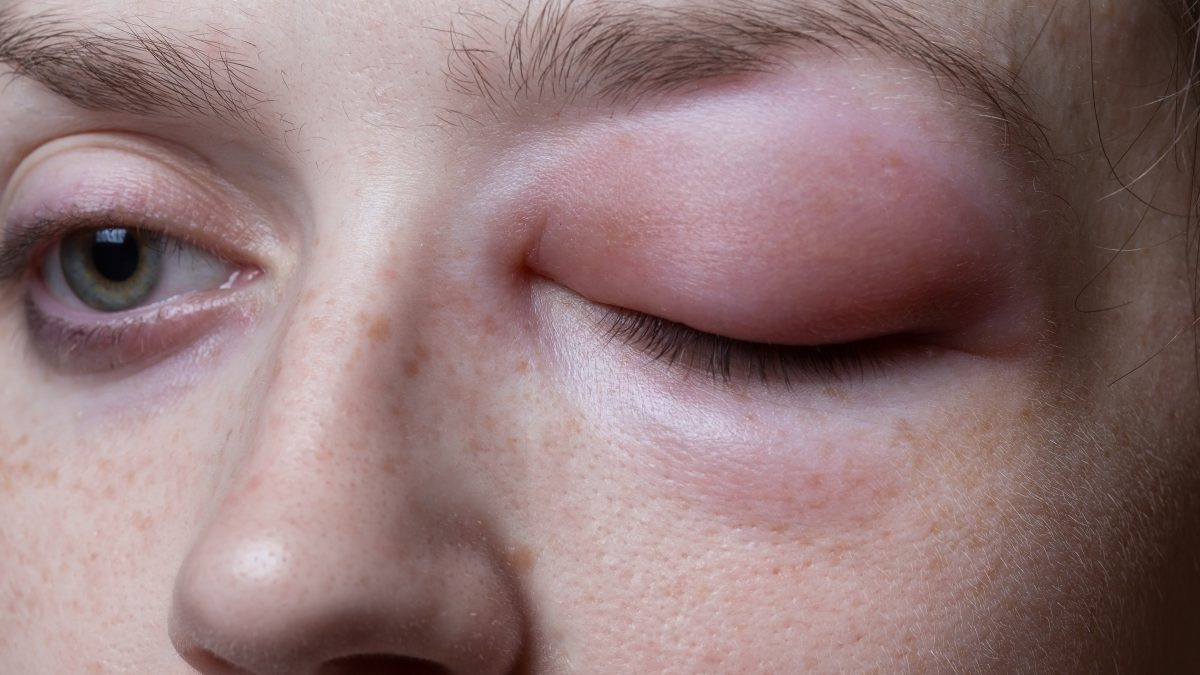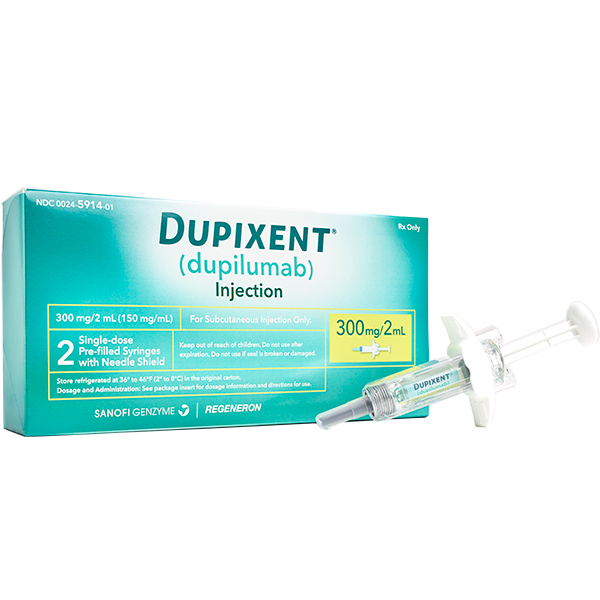Definition
Erythroderma, also known as generalized exfoliative dermatitis, is a skin condition characterized by erythema and scaling affecting over 90% of the body's skin surface. Exfoliative pertains to skin scaling, whereas dermatitis means skin irritation or inflammation.
Skin scaling may develop from underlying medical conditions or an exaggerated body response triggered by particular medications. Occasionally, this condition may have an unknown etiology. Erythroderma, while uncommon, can lead to severe consequences due to its disruption of the skin's ability to retain moisture and shield the body from germs, resulting in complications like infection, loss of nutrition, dehydration, and heart failure.
Causes
Erythroderma is a response to certain medical conditions or triggers. This trigger accelerates the turnover of skin cells, leading to rapid shedding or cell death. Skin scaling occurs due to the quick turnover of skin cells. The causes of erythroderma are often unknown. However, it can be associated with specific skin conditions, drug reactions, or other health issues.
Drug reaction
Certain drugs have the potential to cause significant skin scaling. The reaction may start with a skin rash and progress to erythroderma. Any medicine can trigger an exaggerated immunological response if your body is susceptible to it. Some medications are more likely to cause erythroderma, including:
- Sulfa or penicillin antibiotics
- Barbiturate medications prescribed for seizures, sleeping disorders, insomnia, or anxiety disorders
- Phenytoin and other anticonvulsant drugs
- Antihypertensive drugs, such as calcium channel blockers
- Certain topical medicines
- Proton pump inhibitor medications for gastric issues
- Certain NSAID medications
Other Causes
Erythroderma is linked to autoimmune diseases (when the immune system attacks itself) and some types of cancer. The following conditions are included:
- Lupus, an autoimmune illness that results in inflammation in multiple organs
- Leukemia or blood cancer
- Lymphoma is a malignant condition affecting the lymph node system
- Psoriasis, a chronic inflammatory skin disorder
Risk factor
Risk factors for erythroderma include:
1. Age
Age is a major risk factor. Erythroderma tends to appear at an older age, usually beyond 50 years. However, it can also develop in younger age groups in some circumstances.
2. Gender
Men are 2–4 times more at risk than women.
3. Medications
Medicines that affect the central nervous system have the possibility of triggering erythroderma. Certain antibiotics may induce an overreaction in the body and cause erythroderma, especially in people with a compromised immune system.
4. Other skin diseases
If you also have other skin diseases, such as atopic and contact dermatitis, these conditions might cause or worsen erythroderma. The risk of erythroderma increases if you have chronic or long-term skin diseases such as psoriasis or seborrheic dermatitis. Erythroderma can potentially be a complication of various skin diseases. In addition, several types of malignancy, notably skin cancer, may cause erythroderma.
Symptoms
Common signs of erythroderma include intensely itchy, scaly, inflamed, and discolored skin. Additionally, flu-like symptoms, often accompanied by chills, may also emerge. This condition can lead to fluid deficiency, electrolyte imbalances, and changes in blood pressure.
Changes in skin and nail
In most people, erythroderma begins with changes in skin color and appearance, such as:
- The skin becomes red, purple, pink, or light brown; this discoloration spreads practically throughout the body
- Skin scaling commonly becomes white or yellowish following the discoloration and inflammation that develop. The skin feels tight or rough, and the scales appear shiny or warm to the touch
- Dryness and flaking of the skin cause extreme itching and pain
- Scabs may form with hard edges on the skin
- Nails can look dull, thicken, become brittle, and develop ridges
- Persistent erythroderma can cause changes in skin color followed by hair loss or changes in the texture and appearance of nails.
Flu-Like Symptoms
Erythroderma affects the body's ability to regulate temperature since the skin that should function properly undergoes damage and peels. As a result, you could experience flu-like symptoms, such as fever, swollen lymph nodes, and chills. Extensive scaling of the skin also promotes heat loss through damaged skin. Generally, people with erythroderma often feel sick.
Diagnosis
Information regarding the patient's complaints and medical history is important in diagnosing. Information regarding the patient's current medical history and the history of medications consumed, including over-the-counter medications, will also support the diagnosis.
The disease usually develops quickly if caused by a drug reaction, lymphoma, leukemia, or scalded skin syndrome due to Staphylococcus bacteria. Disease progression will be more gradual if the erythroderma is caused by psoriasis, atopic dermatitis, or the spread of a primary disease.
Itching is a prominent and frequently encountered symptom. Itching can cause blisters due to scratching. Weakness, fever, and chills may also occur. Scaly skin can appear 2-6 days after redness, usually starting from the fold area. When erythroderma persists for weeks, hair can fall out, and nails can become jagged, thicken, and fall off. The skin around the eyes can become inflamed and swollen, resulting in the eyelids folding outward (ectropion) and constantly watering the eyes.
In chronic or long-term cases, pigmentation disorders can occur, especially in dark-skinned races, in the form of even or widespread loss of pigment that resembles vitiligo. Swollen lymph nodes may not occur due to lymphoma or leukemia. A lymph node biopsy is recommended when the lymph nodes are large and rubbery and if the cause of the erythroderma is unknown.
Management
Depending on the severity of their symptoms, patients can get either inpatient or outpatient care; outpatients are typically provided topical medication (creams or ointments) to alleviate symptoms at home. Physicians and other medical specialists will treat dehydration and rectify volume depletion, heat loss, and nutritional or electrolyte imbalances to stabilize patients. The following treatments were received:
- Intravenous fluids and nutritional therapy are used to treat fluid and nutrient loss complications
- Immunosuppressant treatments help reduce skin scaling
- Antibiotics to address bacterial infection symptoms
- Offers advice on how to treat wounds to lower the chance of infection
In addition, healthcare providers will offer assistance in treating underlying illnesses. If you've previously taken medications that caused erythroderma, your doctor will select a different course of treatment for you. To lessen inflammation and improve the patient's comfort, these could also be done:
- Sufficient sleep
- Appropriate wound treatment
- Apply moisturizers to your skin to stop itching
- Corticosteroids are used to lessen skin scaling and treat severe and persistent inflammation
Erythroderma resulting from a drug reaction is easier to treat than erythroderma with an unclear origin. After withdrawing the medicine and starting therapy, the patient typically recovers within a few weeks. Treating conditions like psoriasis and cancer can also accelerate the healing process.
Complications
Erythroderma can result in both dermatological and systemic complications. Complications may arise abruptly and resolve rapidly or persist for an extended period. Possible complications of skin scaling in erythroderma include the following:
- Reduced blood volume caused by the loss of fluids through the process of skin scaling
- The persistent shedding of skin over the entire body might impede the effective absorption of essential nutrients that contribute to the maintenance of the outermost layer of skin, such as vitamins A and D
- Dehydration
- Increased susceptibility to infection and potential harm to skeletal and muscular structures. The skin is a protective barrier for bones, tissues, and organs, shielding them from potential infection and harm. Extensive skin peeling diminishes the protective abilities of the skin
While the symptoms of erythroderma can generally be controlled in the majority of individuals, elderly patients and those with comorbidities may face life-threatening complications. As a result of inflammation, excessive blood flow to the skin may cause heart failure. Individuals with heart failure issues typically present to the emergency department with symptoms of palpitations and dyspnea. Secondary bacterial infections, such as impetigo and cellulitis, may develop on the skin.
Increased blood flow to the skin due to inflammation can disrupt thermoregulation and cause imbalances in fluids and electrolytes. Skin exfoliation and protein depletion can lead to bodily edema. Due to cutaneous water evaporation, patients may encounter compromised thermoregulation and significant fluid loss. Heat loss can lead to hypothermia, a substantial decrease in body temperature. Electrolyte imbalances and dehydration are the results of fluid loss.
Prevention
The prevention of erythroderma relies on effectively managing the root cause. Ensuring enough skin hydration is crucial to preventing the recurrence of erythroderma in individuals with atopic dermatitis. If erythroderma is caused by psoriasis, strictly following the standard treatment for psoriasis is important.
Prevention of erythroderma is often not possible in the majority of cases. When the erythroderma is caused by medication allergies, it can be prevented by refraining from using the medicine. Patients with severe skin conditions should know they are susceptible to acquiring erythroderma. It is important to notify patients of the possibility of the condition returning if they discontinue medication.
When to see a doctor?
If you notice signs such as extensive redness or scaling of the skin throughout your body, it is advisable to seek the advice of a dermatologist. Prompt treatment is crucial to avert the exacerbation of symptoms and the development of complications.
Looking for more information about other diseases, Click here!
- dr Hanifa Rahma
Roth, E. (2022). How to identify and treat exfoliative dermatitis. Retrieved 21 March 2022, from https://www.healthline.com/health/exfoliative-dermatitis
What is exfoliative dermatitis?. (2021). Retrieved 23 March 2022, from https://www.webmd.com/skin-problems-and-treatments/what-is-exfoliative-dermatitis
Umar, SH. (2020). Erythroderma (generalized exfoliative dermatitis). Retrieved 23 March 2022, from https://emedicine.medscape.com/article/1106906-overview
Kirksey, KH. (2018). Erythroderma. Retrieved 23 March 2022, from https://www.ncbi.nlm.nih.gov/pmc/articles/PMC7139437/
Davis, MDP. (2022). Erythroderma in adults. Retrieved 23 March 2022, from https://www.uptodate.com/contents/erythroderma-in-adults












